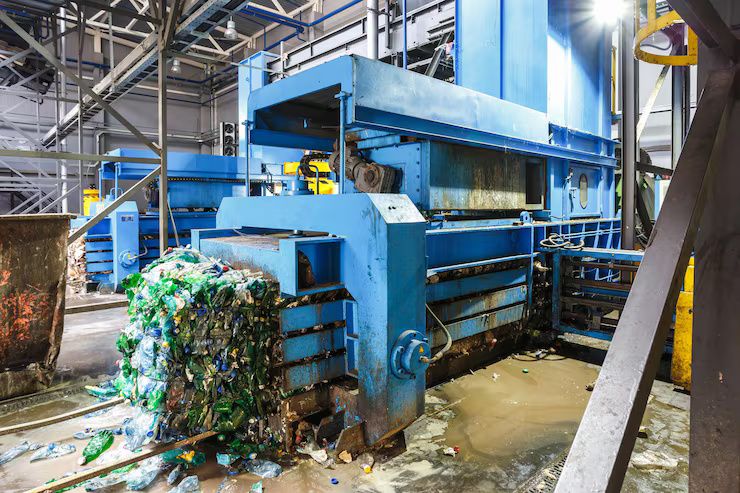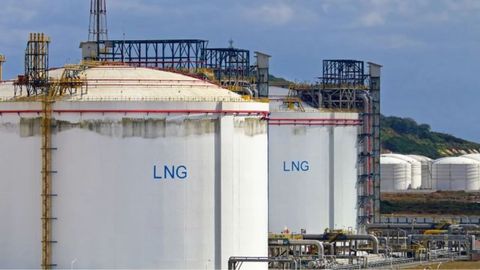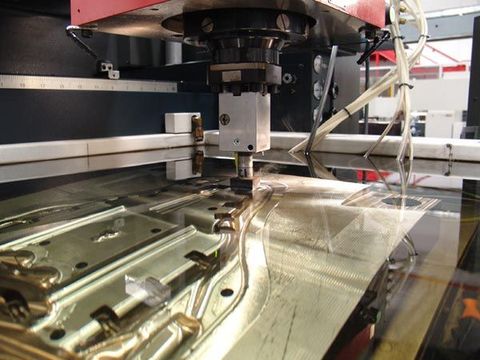A Comprehensive Guide to Industrial Recycling Machinery: Basics, Facts, and Resources
Industrial recycling machinery refers to equipment designed to process, sort, shred, compact, and prepare waste materials for recycling. These machines exist because global industries generate large volumes of waste that cannot be handled manually or through traditional waste disposal methods. Recycling equipment automates material processing, improves speed and consistency, and supports the growing demand for sustainable waste management.
Common types of machinery include shredders, balers, crushers, granulators, sorting systems, conveyor systems, optical scanners, and compaction equipment. Together, these tools help convert waste materials such as plastics, metals, paper, rubber, e-waste, and construction debris into reusable resources.
Industrial recycling machinery has become a core part of modern manufacturing, environmental planning, and circular economy initiatives, offering a structured approach to reducing waste and conserving raw materials.

Importance
Industrial recycling machinery plays a key role in today’s environmental landscape. Its importance is reflected in several areas:
-
Environmental protection: Machinery reduces landfill waste and supports recycling operations, helping countries meet sustainability goals.
-
Efficient resource use: By processing materials for reuse, industries lower the need for extracting new raw materials.
-
Improved safety: Automated equipment reduces human exposure to hazardous waste or difficult manual handling.
-
Support for circular economy systems: Many industries rely on recycled materials for production, and recycling machinery ensures consistent availability of processed materials.
-
Waste volume management: As global waste generation increases, machinery helps manage large-scale volumes that cannot be handled through manual or small-scale systems.
Industries such as manufacturing, packaging, construction, automotive, agriculture, and electronics depend on recycling machinery to reduce environmental impact and comply with sustainability expectations.
Recent Updates
The industrial recycling machinery sector has experienced several advancements in 2024–2025, particularly driven by digital transformation and sustainability efforts:
-
AI-powered sorting systems (2024): Advances in machine vision and neural networks have improved recognition of plastics, metals, and mixed materials.
-
Automation and robotic arms (2025): Robots now assist with precision sorting, reducing contamination in recycling streams.
-
Energy-efficient machinery (2024): New models use less energy while delivering higher productivity.
-
Expansion of e-waste recycling equipment (2025): With global electronic waste increasing, specialized machinery for circuit boards, batteries, and electrical components has gained momentum.
-
IoT integration (2025): Connected sensors now monitor performance, predict breakdowns, and analyze recycling efficiency.
-
High-capacity shredders (2024): Improvements in durability and output speed have been reported in construction waste and automotive scrap recycling.
Reports also suggest steady global growth in recycling technologies, driven by sustainability policies and the rising volume of industrial waste.
Laws or Policies
Industrial recycling machinery is shaped by environmental regulations, waste management policies, and international standards. While rules vary by region, several common policy themes influence how machinery is designed, used, and monitored:
-
Waste management regulations: Many countries require industries to follow specific recycling procedures for plastics, metals, and hazardous waste.
-
Extended Producer Responsibility (EPR): Manufacturers are increasingly responsible for the end-of-life management of products, boosting demand for advanced recycling machinery.
-
Environmental protection laws: Policies encourage the use of machinery that reduces emissions, noise, and energy consumption.
-
Safety and equipment standards: International standards such as ISO and regional safety codes regulate machinery design to protect workers.
-
Circular economy initiatives: Regions such as the European Union promote recycling targets that directly influence industrial adoption of new machinery.
-
E-waste regulations: Many countries now mandate structured recycling for electronics, increasing the need for specialized recovery equipment.
These policies collectively ensure that recycling machinery contributes to global sustainability efforts while maintaining operational safety and environmental compliance.
Tools and Resources
Several modern tools and resources support industries, engineers, and environmental professionals in understanding and using industrial recycling machinery effectively:
-
Material identification software: Tools using AI and imaging help classify waste materials for sorting.
-
Recycling calculators: Online platforms offer volume, weight, and conversion calculators to estimate recycling outputs.
-
Lifecycle assessment tools: Software such as OpenLCA helps analyze environmental impact of recycling processes.
-
Machinery manuals and technical guides: Manufacturers and engineering institutions provide detailed documentation for safe operation.
-
Environmental databases: National and international databases track recycling requirements, sustainability targets, and waste material classifications.
-
Training courses and webinars: Educational platforms offer knowledge on recycling technologies, machine safety, and environmental compliance.
These resources support accurate processing, improve productivity, and help operators stay informed about industry standards.
Example Table: Common Types of Industrial Recycling Machinery and Their Uses
| Machinery Type | Primary Use | Common Material Processed |
|---|---|---|
| Shredders | Breaking down large waste items | Plastic, metal, wood, e-waste |
| Granulators | Reducing materials into fine particles | Plastics, rubber, cables |
| Balers | Compressing materials into compact blocks | Paper, cardboard, plastic film |
| Optical Sorting Systems | Identifying materials through sensors | Mixed plastics, metals, glass |
| Magnetic Separators | Removing magnetic metals | Steel, iron |
Example Graph: Growth Trends in Recycling Machinery Demand (2023–2025)
| Year | Demand Increase (%) |
|---|---|
| 2023 | 8% |
| 2024 | 11% |
| 2025 | 15% |
FAQs
What is industrial recycling machinery used for?
It is used to process, sort, shred, compact, and prepare waste materials so industries can reuse or recycle them efficiently.
Which industries rely most on recycling machinery?
Manufacturing, packaging, construction, automotive, and electronics industries use recycling machinery for handling large volumes of materials.
Are modern recycling machines automated?
Yes, many machines now incorporate automation, robotics, AI, and IoT sensors to improve speed, accuracy, and operational safety.
Can industrial recycling machinery handle mixed materials?
Advanced systems such as optical sorters and AI-based scanners can identify and separate different materials with high accuracy.
Is recycling machinery regulated by safety standards?
Yes, international and regional standards require safety features, worker protection measures, and environmentally responsible operation.
Conclusion
Industrial recycling machinery plays a critical role in supporting global sustainability efforts and modern waste management systems. By automating the processing of materials and reducing human exposure to hazardous waste, these machines help industries operate more efficiently and responsibly.
Recent innovations in automation, AI, and energy-efficient technology have improved productivity and expanded recycling capabilities. At the same time, environmental regulations and circular economy policies continue to shape the development and adoption of recycling machinery worldwide.







